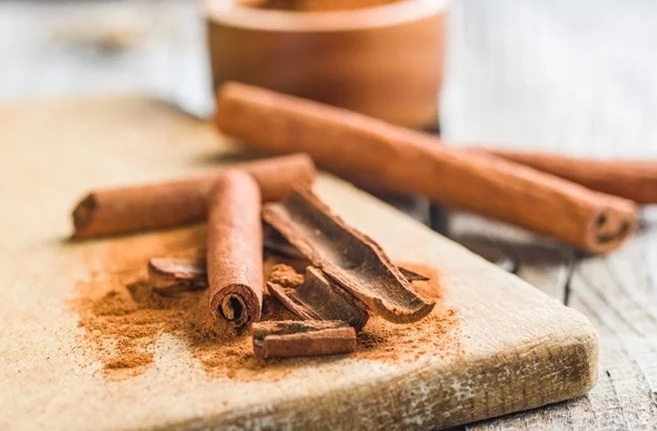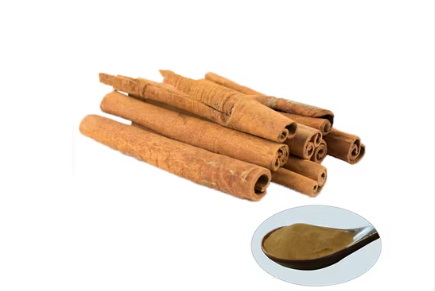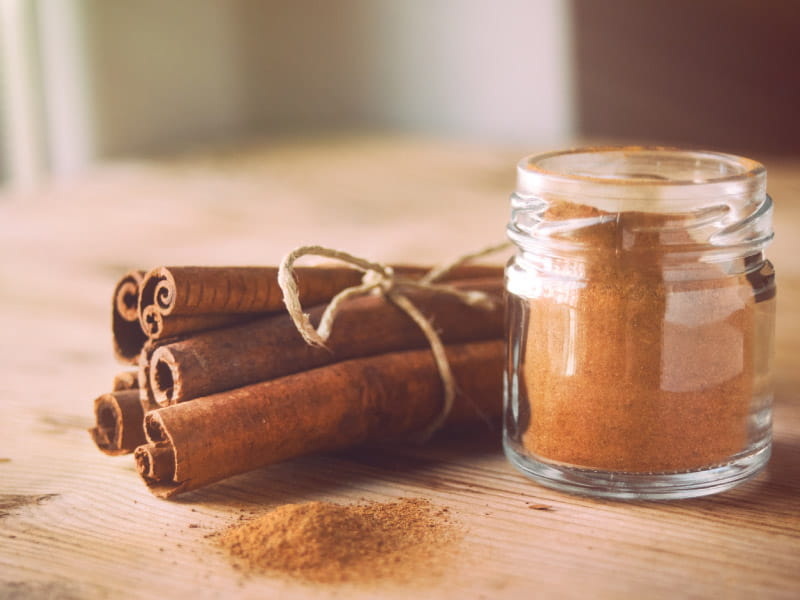Content Menu
● Introduction to Cinnamon
>> Cassia vs. Ceylon Cinnamon
● Cinnamon Bark vs. Cinnamon Bark Extract
>> Cinnamon Bark
>> Cinnamon Bark Extract
● Effectiveness Comparison
● Applications and Uses
>> Cinnamon Bark
>> Cinnamon Bark Extract
● Safety Considerations
● Nutritional and Medicinal Benefits
● Comparison in Different Industries
>> Food Industry
>> Pharmaceutical Industry
>> Cosmetic Industry
>> Ancient Egypt
>> Ancient China
● Modern Research and Developments
>> Clinical Trials
>> Future Directions
● Conclusion
● FAQs
>> 1. What is the main difference between Cassia and Ceylon cinnamon?
>> 2. How is cinnamon bark extract made?
>> 3. Is cinnamon bark extract safe for consumption?
>> 4. What are the health benefits of cinnamon bark extract?
>> 5. Can cinnamon bark extract be used in cosmetics?
● Citations:
Cinnamon, a spice derived from the inner bark of trees in the Cinnamomum genus, has been cherished for its flavor and medicinal properties for centuries. Among the various forms of cinnamon, cinnamon bark and cinnamon bark extract are two commonly used forms, each with distinct characteristics and applications. This article delves into the differences between cinnamon bark and cinnamon bark extract, exploring their effectiveness, uses, and benefits.

Introduction to Cinnamon
Cinnamon is not just a flavor enhancer; it is a multifaceted medicinal plant with a rich history in traditional medicine. It is primarily obtained from two species: Cassia Cinnamon (Cinnamomum cassia) and Ceylon Cinnamon (Cinnamomum verum). Both types have different flavor profiles and coumarin content, which affects their suitability for various applications.
Cassia vs. Ceylon Cinnamon
- Cassia Cinnamon: Known for its strong, spicy flavor and high cinnamaldehyde content, Cassia is widely used in commercial products. However, it contains high levels of coumarin, which can be harmful in large doses.
- Ceylon Cinnamon: Often referred to as "true cinnamon," Ceylon has a milder, sweeter flavor with low coumarin content. It is preferred for health-focused formulations due to its delicate taste and high antioxidant content.
Cinnamon Bark vs. Cinnamon Bark Extract
Cinnamon Bark
Cinnamon bark is the raw material from which cinnamon powder is derived. It is used in cooking and traditional medicine for its flavor and medicinal properties. The bark contains various bioactive compounds, including cinnamaldehyde, which contributes to its flavor and health benefits.
Cinnamon Bark Extract
Cinnamon bark extract is a concentrated form of cinnamon, standardized for specific active compounds like polyphenols and cinnamaldehyde. It is commonly used in dietary supplements for its metabolic and antioxidant benefits.
Effectiveness Comparison
When comparing the effectiveness of cinnamon bark and cinnamon bark extract, several factors come into play:
1. Concentration of Active Compounds: Cinnamon bark extract is more concentrated and standardized, ensuring consistent potency in supplements and functional foods.
2. Bioavailability: The bioavailability of active compounds in cinnamon bark extract is generally higher due to its concentrated form, which can enhance absorption and efficacy.
3. Flavor Profile: Cinnamon bark offers a full flavor spectrum, while cinnamon bark extract can be adapted to various taste profiles, making it versatile for different formulations.
4. Safety and Coumarin Content: Both Cassia and Ceylon cinnamon barks contain coumarin, but Ceylon has significantly lower levels. Cinnamon bark extract can be sourced from either type, depending on the desired coumarin content.
Applications and Uses
Cinnamon Bark
- Culinary Uses: Commonly used in baking, cooking, and as a flavoring agent.
- Traditional Medicine: Used for its warming properties and to alleviate digestive issues.
Cinnamon Bark Extract
- Dietary Supplements: Utilized for blood sugar support, weight management, and antioxidant benefits.
- Functional Foods: Added to beverages and foods for its metabolic and health benefits.

Safety Considerations
While cinnamon is generally safe, high doses of Cassia cinnamon can pose health risks due to its coumarin content. Ceylon cinnamon and cinnamon bark extract, especially when sourced from Ceylon, are safer alternatives for long-term use.
Nutritional and Medicinal Benefits
Cinnamon, in both bark and extract forms, offers several nutritional and medicinal benefits:
- Antioxidant Properties: Cinnamon contains powerful antioxidants that help protect against oxidative stress and inflammation.
- Blood Sugar Management: Studies suggest that cinnamon may help lower blood sugar levels and improve insulin sensitivity.
- Weight Loss: Cinnamon bark extract is sometimes used in weight loss supplements due to its potential to enhance metabolism.
Comparison in Different Industries
Food Industry
In the food industry, cinnamon bark is preferred for its flavor and aroma, while cinnamon bark extract is used in functional foods for its health benefits.
Pharmaceutical Industry
Cinnamon bark extract is more commonly used in pharmaceuticals due to its standardized active compounds and higher bioavailability.
Cosmetic Industry
Cinnamon bark extract is also used in cosmetics for its antioxidant properties, which can help protect the skin from environmental stressors.Historical and Cultural Significance
Cinnamon has been a prized spice throughout history, not only for its culinary uses but also for its medicinal and cultural significance. In ancient civilizations, such as Egypt and China, cinnamon was used in rituals and as a form of currency due to its rarity and value.
Ancient Egypt
In ancient Egypt, cinnamon was used in the embalming process and as an offering to the gods. Its high value made it a symbol of wealth and power.
Ancient China
Cinnamon was also highly valued in ancient China, where it was used in traditional medicine and as a spice in cooking. The Chinese recognized its warming properties and used it to balance the body's energy.
Modern Research and Developments
Modern research has focused on the potential health benefits of cinnamon, including its effects on blood sugar levels, weight management, and antioxidant activity. Studies have shown that cinnamon can improve insulin sensitivity and reduce inflammation, making it a promising ingredient for health supplements.
Clinical Trials
Several clinical trials have investigated the efficacy of cinnamon in managing blood sugar levels. While results are promising, more research is needed to fully understand its effects.
Future Directions
Future research directions include exploring the use of cinnamon bark extract in pharmaceuticals and functional foods, as well as its potential applications in cosmetics and skincare products.
Conclusion
In conclusion, cinnamon bark extract is often more effective than regular cinnamon bark due to its concentrated and standardized form, which ensures consistent potency and bioavailability. However, the choice between cinnamon bark and cinnamon bark extract depends on the specific application, desired flavor profile, and safety considerations.

FAQs
1. What is the main difference between Cassia and Ceylon cinnamon?
Cassia cinnamon has a strong flavor and high coumarin content, while Ceylon cinnamon is milder and safer for health-focused products due to its low coumarin levels.
2. How is cinnamon bark extract made?
Cinnamon bark extract is made by extracting active compounds from cinnamon bark using solvents like ethanol or water, followed by concentration and standardization.
3. Is cinnamon bark extract safe for consumption?
Cinnamon bark extract is generally safe when sourced from Ceylon cinnamon or when coumarin levels are controlled. However, high doses of Cassia-based extracts should be avoided due to potential liver toxicity.
4. What are the health benefits of cinnamon bark extract?
Cinnamon bark extract is known for its antioxidant and anti-inflammatory properties, and it may help support blood sugar management and weight loss.
5. Can cinnamon bark extract be used in cosmetics?
Yes, cinnamon bark extract can be used in cosmetics for its antioxidant properties and potential skin benefits, as outlined in various patent applications.
Citations:
[1] https://greenjeeva.ca/cinnamon-bark-extract-vs-cassia-vs-ceylon/
[2] https://pmc.ncbi.nlm.nih.gov/articles/PMC9914695/
[3] https://pmc.ncbi.nlm.nih.gov/articles/PMC8804376/
[4] https://www.livestrong.com/article/505050-cinnamon-extract-vs-ground-cinnamon/
[5] https://pmc.ncbi.nlm.nih.gov/articles/PMC4003790/
[6] https://patents.google.com/patent/CN107496269A/en
[7] https://www.greenjeeva.com/blog/cinnamon-powder-extract-powder-comparison-guide
[8] https://www.rxlist.com/supplements/cinnamon_bark.htm






























